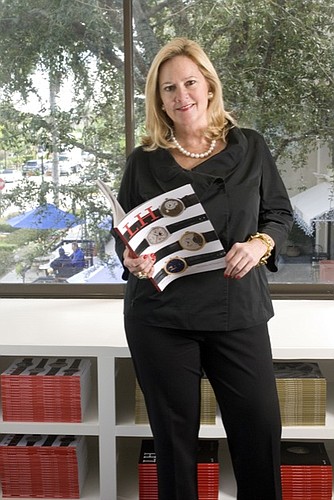- November 24, 2024
-
-
Loading

Loading

There's no lack of buyers at auctions these days.
Just ask Leslie Hindman, who owns and manages the Chicago auction house that bears her name. With the growth of the Internet, even the most obscure pieces sell well, she says.
The challenge is finding stuff to sell.
As Hindman discovered, Midwesterners who move to Florida to retire often take their best stuff with them. When they die or need cash for retirement needs, Hindman will help them or their beneficiaries sell their jewelry, fine furniture and works of art.
Hindman recalls visiting Naples recently and listening to a waiter explain how he helped a 90-year-old woman dispose of a large collection of Tiffany glass. That confirmed Hindman's hunch that Naples and South Florida residents have lots of precious possessions stashed away in their homes and warehouses.
All that stuff is the lifeblood of the auction business.
“This is about getting consignments,” says Hindman. Older people with precious things to sell don't want to ship items to New York, she says. An office in Naples lets customers visit with Hindman's experts who will fly from Chicago to meet with them in person. “People who are 70 want you to be there,” she says.
It's the same reason Hindman wants to open an office in Detroit, where people in financial distress need to raise cash. Wealthy families in that area have collected art and other fine things for generations and there's little competition to sell it, she says.
In the late 1990s, Sotheby's tried to muscle in on the middle market, a niche that Hindman successfully carved out for herself in Chicago. In fact, Hindman obliged by selling her business to Sotheby's in 1997 for an undisclosed sum and agreeing not to compete with the well-known auction house for five years.
But Sotheby's, best known for selling multi-million-dollar art collections, wasn't good at selling less-expensive items that Hindman specialized in and exited that business soon afterwards. “They're not interested in $20,000 things,” says Hindman.
Sotheby's eventually closed its Chicago office, allowing Hindman, 55, to build a new company, Leslie Hindman Auctioneers in 2003. “Everybody kept calling me,” she says. “I'm in a lot of people's wills.”
Hindman, who earns 33% on average sales, says she hopes to attract sellers from Tampa to Miami. About half of her business comes from estate sales and 20% to 30% is from museums and other institutions that need to sell art that doesn't fit with their mission. The rest are individual sellers.
Hindman's auction sales total between $15 million to $16 million annually for about 24,000 lots. She hopes three auctions in Naples this year will generate $1 million, though she concedes that it's little more than an estimate at this point.
Part of her challenge in the current market is to persuade sellers that this is a good time to sell their precious things. Some high-profile auctions haven't done as well as expected and many sellers worry there's a glut of inventory.
While she acknowledges that the contemporary art market is down, Hindman counters that most other art has held up well. Prices for jewelry, furniture and Asian art are rising, she says. For example, a jade bowl that was estimated to cost between $2,000 and $4,000 recently sold at a Hindman auction for $21,000.
Hindman says the Internet's broad reach has kept most art from sinking like other assets. Through the two Web sites that she uses during her auctions in Chicago, Hindman says 75% of her buyers come from outside the city and as far as China and Russia.
—Jean Gruss